When you first see a desert willow tree (
Chilopsis linearis), you can't help but notice its beautiful flowers, which make it a popular choice for warm-climate gardeners. Whether you grow it as a tree or as a large shrub, desert willow will add beauty to your summer landscape.
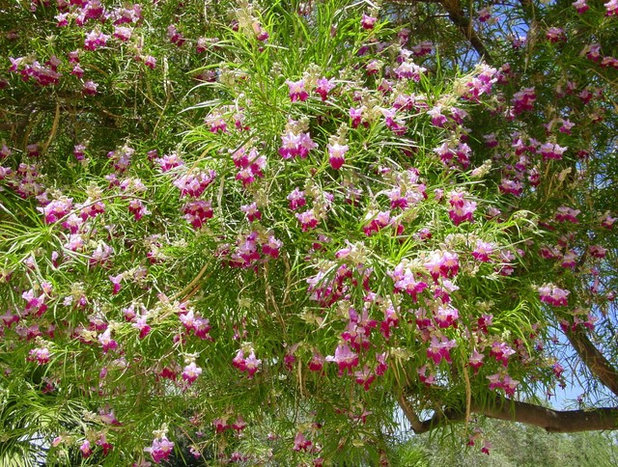
Noelle Johnson Landscape Consulting
Botanical name: Chilopsis linearisCommon name: Desert willow
Origin: Native to the American Southwest
USDA climate zones: 6 to 9 (find your zone)
Water requirement: Low
Light requirement: Full sun to partial shade
Mature size: 25 feet tall and wide
Benefits and tolerances: Drought tolerant once established, but does best if watered two or three times a month during the summer; attracts bees and hummingbirds
Seasonal interest: Fragrant pink orchid-shaped flowers appear spring through summer
When to plant: Spring, summer or fall
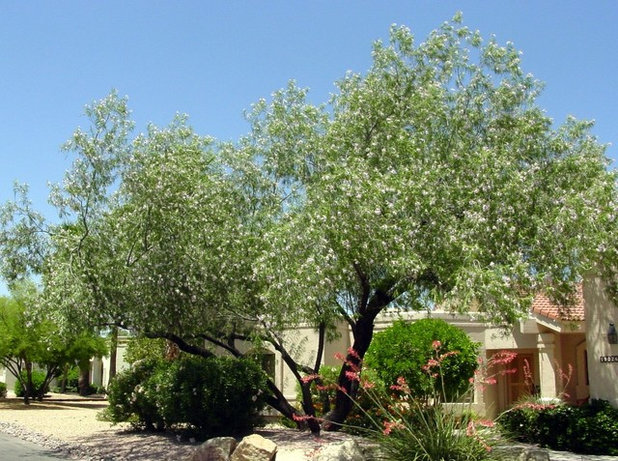
Noelle Johnson Landscape Consulting
Distinguishing traits. The most outstanding trait of desert willow is its flowers, which are borne upon branches covered in willow-shaped leaves. While not a true willow, desert willow is related to pink and red trumpet vines.
Desert willow is a deciduous tree that grows quickly and can be grown as a large shrub or trained as a multitrunk tree.
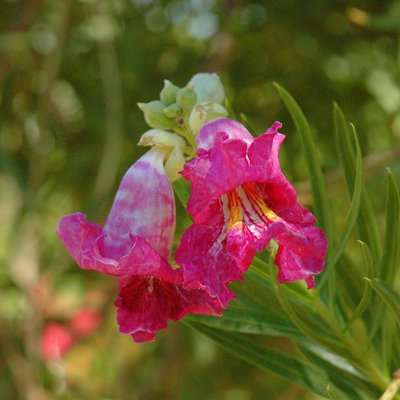
Noelle Johnson Landscape Consulting
The flowers of desert willow have a beautiful orchid shape and contrast beautifully with the light-green foliage. In addition to adding beauty to the summer landscape, the flowers are fragrant and attract bees and hummingbirds with their nectar.
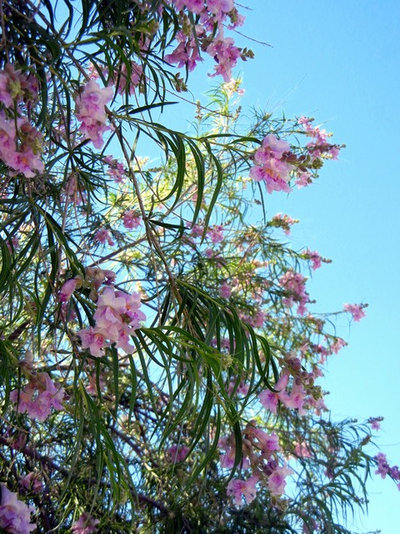
Noelle Johnson Landscape Consulting
The flower color can vary from white to dark pink and all shades in between, depending on the variety. Differences in size, amount of flowers produced, leaf retention in winter and presence of seedpods are noted for the popular desert willow varieties below.
- 'Art's Seedless' doesn't produce seedpods, improving the winter appearance of this desert willow variety.
- 'Bubba' produces dark pink flowers, grows larger then most varieties (30 feet tall and wide) and has fewer seedpods.
- 'Lucretia Hamilton' has burgundy flowers and is slightly smaller than other varieties, reaching 20 feet tall and wide.
- 'Timeless Beauty' is covered with bicolor flowers of lavender and burgundy. It does not produce seedpods, is hardy to zone 7 and grows slightly smaller (15 to 20 feet tall and wide).
- 'Warren Jones' has light pink flowers, and its foliage is retained longer into winter. It is slightly less cold hardy (zone 8).
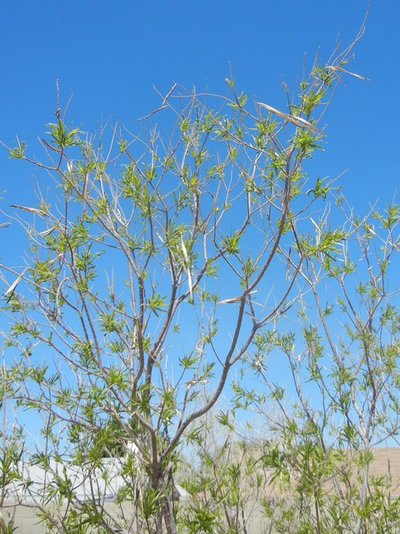
Noelle Johnson Landscape Consulting
This fast-growing tree produces narrow seedpods in fall that are retained on the tree through winter after it sheds its leaves. If you find the seedpods objectionable, be sure to select one of the "seedless" varieties.
Desert willow is a fire-wise plant, which makes is suitable to grow in areas where fire danger is present.
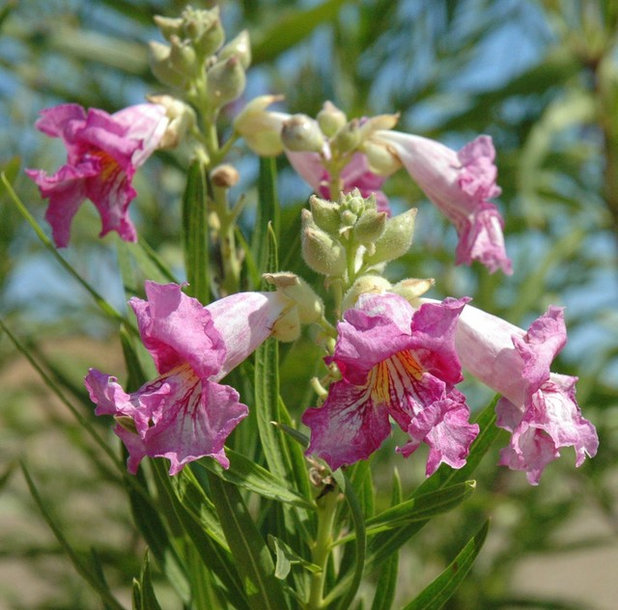
Noelle Johnson Landscape Consulting
How to use it. Desert willow is very versatile in the landscape and can be grown as a large shrub or a small to medium-size tree. It is most popularly grown as a multitrunk tree, where it provides light filtered shade throughout the summer months. Place it where you can view it from a window and watch the hummingbirds visit the nectar-rich flowers.
Desert willow fits well into smaller areas, making it a great patio tree. For a large, informal hedge, allow it to grow into its natural form.
Pair desert willow with summer-flowering plants such as
trailing lantana (
Lantana montevidensis)
, Baja ruellia (
Ruellia peninsularis)
and angelita daisy (
Tetraneuris acaulis)
for a stunning summer landscape.
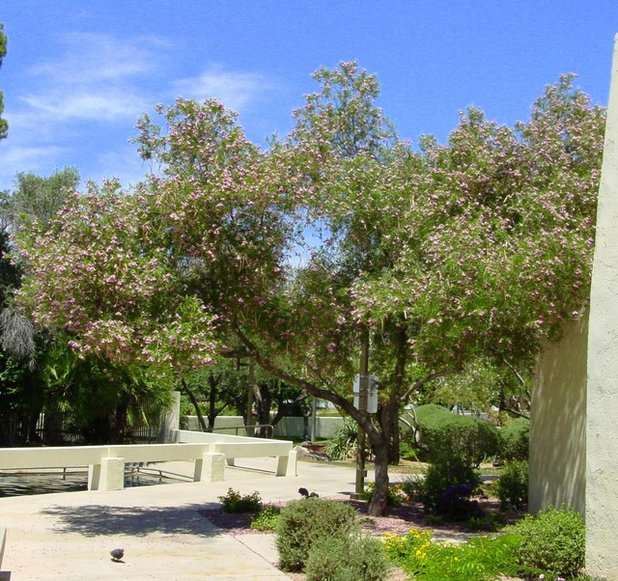
Noelle Johnson Landscape Consulting
Planting notes. Desert willow does best in full sun, although it can also grow in partial shade. Plant it in well-drained soil.
This desert native isn't fussy and doesn't require a lot of attention. Prune it for shape in winter and remove any suckers in spring. Remove any remaining seedpods in winter if desired.
Although desert willow is drought tolerant, it looks best with supplemental water. Water it at least two or three times in the summer and at least once a month in winter.





